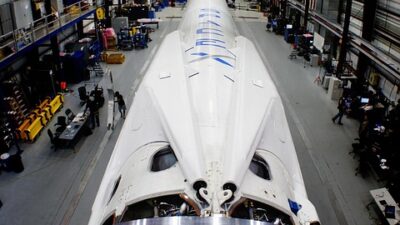The Stock Market Roller Coaster: Analyzing Tesla’s Financial Performance
The stock market is notorious for its volatility, with prices often resembling a roller coaster ride. Among the myriad of companies that have captured investor attention, Tesla (TSLA) stands out not only for its innovative technology but also for its tumultuous stock performance. Analyzing Tesla’s financial performance provides a glimpse into the nuances of its position within the stock market.
The Tesla Phenomenon
Since its initial public offering (IPO) in 2010, Tesla has been a trailblazer in the electric vehicle (EV) industry, combining cutting-edge technology with visionary leadership under CEO Elon Musk. The company’s mission to accelerate the world’s transition to sustainable energy has garnered a loyal following of investors, often leading to some rather unpredictable stock fluctuations.
Stock Performance Over Time
Tesla’s stock has experienced significant highs and lows over the years. After its IPO, TSLA shares saw a gradual increase until around 2019 when the stock began its meteoric rise. Fueled by an increasing demand for electric vehicles and investor enthusiasm regarding green technologies, Tesla’s market capitalization soared, overtaking traditional automakers to become one of the most valuable companies globally.
However, this rapid ascent was not without its pitfalls. The stock market is impacted by various macroeconomic factors, and Tesla has been no exception. Factors including global supply chain disruptions, competition from traditional automakers entering the EV space, and fluctuations in investor sentiment have all contributed to unpredictable stock patterns. In 2022, for instance, Tesla’s stock experienced significant dips that left investors apprehensive.
Financial Metrics
To understand Tesla’s financial performance, it’s important to consider key metrics:
-
Revenue Growth: Tesla’s revenue has consistently grown year-over-year. In 2021, the company achieved approximately $53.8 billion in revenue, a staggering increase from the previous year. Continued expansion of production facilities and increasing deliveries have been the driving forces behind this growth.
-
Profit Margins: Tesla has also improved its gross profit margins, which can be attributed to economies of scale as production ramps up and operational efficiencies are realized. Despite higher costs associated with raw materials and supply chain challenges, the company managed to maintain robust margins.
-
Net Income: After years of operating losses, Tesla posted its first annual profit in 2020 and has continued to generate positive net income in the following years. This transition has reassured investors and marked a significant milestone in the company’s journey toward profitability.
- Market Capitalization: Tesla has consistently held one of the largest market capitalizations among U.S. companies. Although it may appear overvalued relative to its earnings at times, many investors justify this premium with the potential for future growth in the EV market.
Challenges and Controversies
Despite its successes, Tesla has faced numerous challenges. Production delays, quality control issues, and increasing competition from both startups and established automakers have tested the company’s resilience. The broader economic environment, characterized by rising interest rates and inflationary pressures, has also dampened investor sentiment, leading to sell-offs and volatility.
Moreover, Elon Musk’s offbeat statements and controversies can influence stock prices sharply. Tweets and public appearances can lead to significant price movements, reflecting the intertwined nature of social media and stock market behavior.
Looking Ahead: The Future of Tesla’s Stock
As Tesla continues to expand its product lineup—ranging from updated Model S and Model X vehicles to the much-anticipated Cybertruck—the future remains promising yet uncertain. The company is not just limited to car manufacturing; its ventures into solar energy and battery storage could position it as a holistic energy solutions provider.
However, potential investors must keep a keen eye on emerging competitors, regulatory developments, and global market dynamics that could influence performance. While the stock market may be akin to a roller coaster, the underlying fundamentals of Tesla’s business model and strategic vision could still provide a compelling narrative for long-term growth.
Conclusion
Tesla remains a fascinating case study in the modern stock market landscape. Its financial performance reflects both the opportunities and risks inherent in the rapidly evolving electric vehicle market. For investors, staying informed and understanding the broader context of Tesla’s operations and the stock market environment will be key to navigating the thrilling yet unpredictable ride that is investing in TSLA. As the stock continues to fluctuate, the coming years will undoubtedly shape the narrative of Tesla and its role in the global market.



